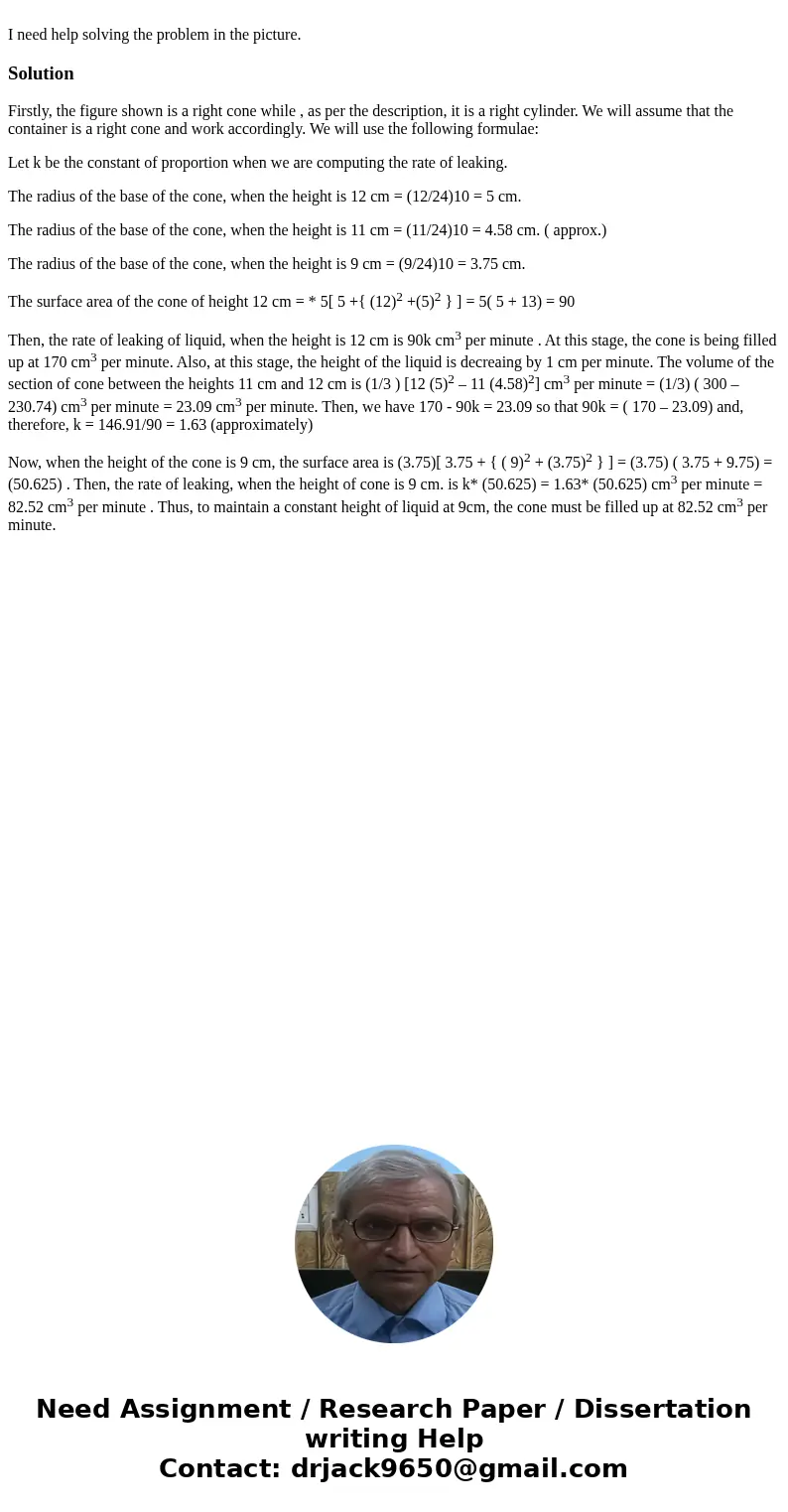I need help solving the problem in the pictureSolutionFirstl
I need help solving the problem in the picture.
Solution
Firstly, the figure shown is a right cone while , as per the description, it is a right cylinder. We will assume that the container is a right cone and work accordingly. We will use the following formulae:
Let k be the constant of proportion when we are computing the rate of leaking.
The radius of the base of the cone, when the height is 12 cm = (12/24)10 = 5 cm.
The radius of the base of the cone, when the height is 11 cm = (11/24)10 = 4.58 cm. ( approx.)
The radius of the base of the cone, when the height is 9 cm = (9/24)10 = 3.75 cm.
The surface area of the cone of height 12 cm = * 5[ 5 +{ (12)2 +(5)2 } ] = 5( 5 + 13) = 90
Then, the rate of leaking of liquid, when the height is 12 cm is 90k cm3 per minute . At this stage, the cone is being filled up at 170 cm3 per minute. Also, at this stage, the height of the liquid is decreaing by 1 cm per minute. The volume of the section of cone between the heights 11 cm and 12 cm is (1/3 ) [12 (5)2 – 11 (4.58)2] cm3 per minute = (1/3) ( 300 – 230.74) cm3 per minute = 23.09 cm3 per minute. Then, we have 170 - 90k = 23.09 so that 90k = ( 170 – 23.09) and, therefore, k = 146.91/90 = 1.63 (approximately)
Now, when the height of the cone is 9 cm, the surface area is (3.75)[ 3.75 + { ( 9)2 + (3.75)2 } ] = (3.75) ( 3.75 + 9.75) = (50.625) . Then, the rate of leaking, when the height of cone is 9 cm. is k* (50.625) = 1.63* (50.625) cm3 per minute = 82.52 cm3 per minute . Thus, to maintain a constant height of liquid at 9cm, the cone must be filled up at 82.52 cm3 per minute.

 Homework Sourse
Homework Sourse